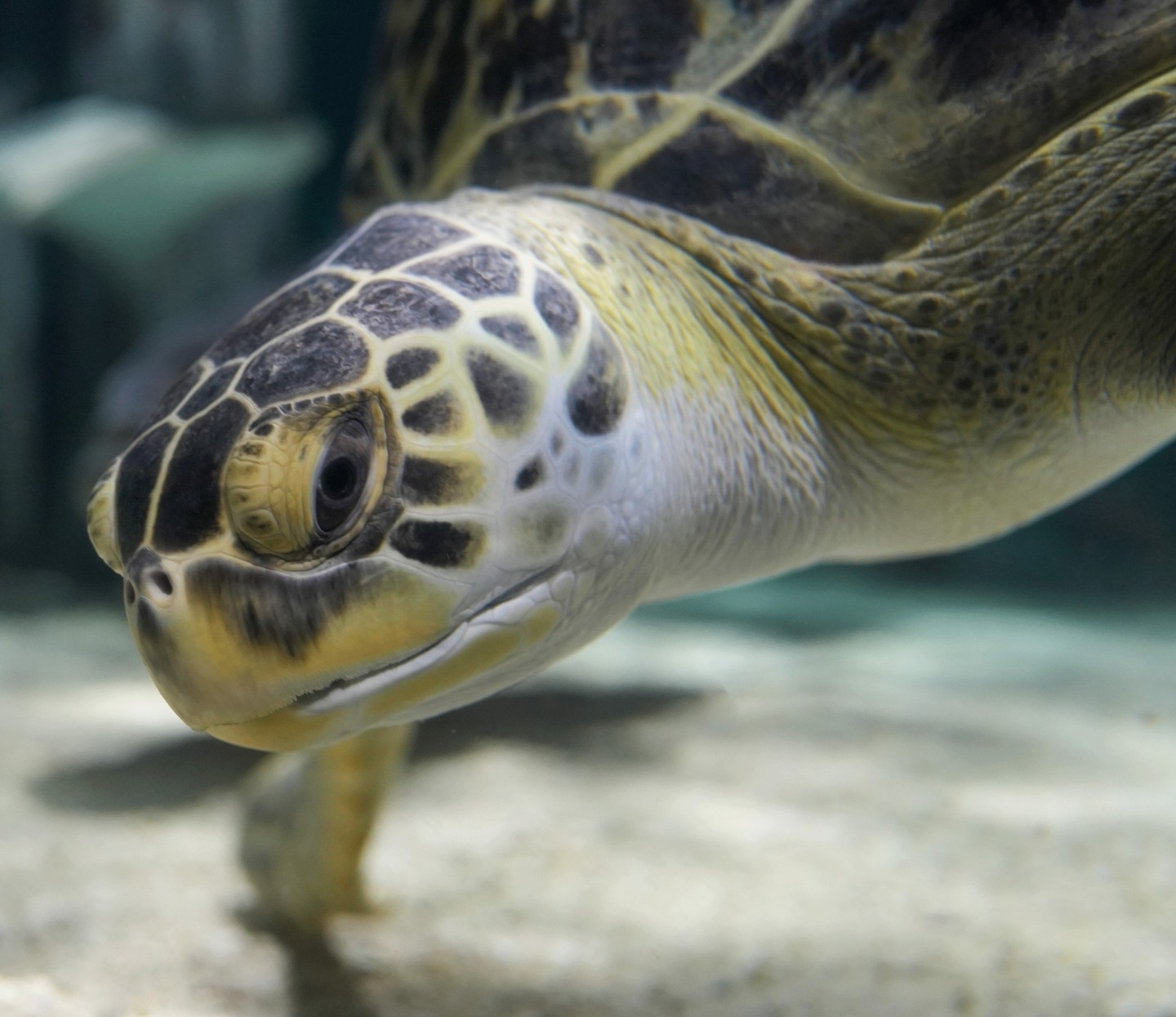- The anatomical adaptation of green sea turtles, focusing on their beak structure
- The role of the green sea turtle’s beak adaptation in its feeding habits and diet
- Conservation efforts targeting green sea turtles, including threats they face
- Zoological management practices for green sea turtles in captivity
- Broader implications of green sea turtle protection for marine ecosystems
Green sea turtles, such as Charlotte, possess an intriguing adaptation that distinguishes them from many other reptiles of the ocean. Unlike species equipped with standard sets of teeth, these turtles have evolved a unique oral structure—a rounded beak edged with fine serrations that aid in their dietary needs. This article delves into how these specialized features meet their ecological demands, the conservation challenges they face, and the best practices for their care in zoological settings.
The beak structure of green sea turtles offers a fascinating glimpse into evolutionary biology. These turtles boast a beak with serrated edges specifically designed to slice through their plant-based diet primarily composed of seagrasses and algae. The serrations act like a pair of scissors, allowing them to efficiently grasp and shred vegetation while underwater. This adaptation is pivotal as it aligns perfectly with the nutritional requirements of green sea turtles. Unlike many marine creatures that hunt prey or scavenge, green sea turtles require substantial amounts of fibrous plants to maintain their energy levels and health, making their serrated beak an indispensable tool for survival.
The dietary habits of green sea turtles directly influence their beak’s evolutionary developments. Since these turtles feed almost exclusively on seagrasses once they reach adulthood, their jaws have evolved to handle this specialized diet. Their sharp-edged beak not only aids in seagrass consumption but also allows them to contribute significantly to the health of marine ecosystems. By cropping seagrass meadows, they promote healthier seagrass beds, which play a critical role in carbon sequestration and serve as crucial habitats for various marine species. This interaction highlights their integral environmental role and underscores the importance of protecting this species.
Green sea turtles face numerous threats that complicate their conservation. Human activities, such as coastal development and pollution, severely impact their habitats and food sources. Plastic pollution is a critical issue; turtles can mistake plastic trash for jellyfish or other sources of food, leading to ingestion that can be fatal. Furthermore, climate change poses a significant threat, affecting nesting beaches and the sex ratio of hatchlings, as temperature plays a key role in determining the sex during egg development. Addressing these threats requires collaborative efforts focused on habitat protection, pollution control, and climate change mitigation.
Effective management of green sea turtles extends beyond conservation in the wild. In zoological settings, replicating their natural habitat and dietary conditions is crucial for their well-being. Green sea turtles require spacious environments that mirror their natural homes. Providing a balanced diet consisting mainly of seagrasses and algae is essential. Furthermore, breeding programs in captivity can contribute to population recovery efforts. Zoological institutions must employ evidence-based practices and collaborate globally to enhance captive care, enrich their environments, and educate the public about their ecological significance.
The implications of protecting green sea turtles reach far beyond the species itself. By ensuring the survival of these ancient mariners, we also safeguard the marine ecosystems they inhabit. Healthy seagrass beds, maintained by grazing turtles, are essential to biodiversity in the oceans. These habitats act as nurseries for numerous marine organisms and serve as significant carbon sinks, combatting climate change effects. Thus, the conservation of green sea turtles offers broader environmental benefits and maintains the delicate balance necessary for thriving oceanic ecosystems.
In conclusion, the green sea turtle, with its specialized beak and ecological importance, symbolizes the intricate interplay between species-specific adaptations and broader environmental conservation. Recognizing the threats they face and understanding their needs both in the wild and under human care can drive effective conservation strategies. By protecting these turtles and their habitats, we honor the interconnectedness of life in our oceans, fostering a sustainable future for marine biodiversity.
*****
Source Description
Did you know that instead of traditional teeth, green sea turtles, like Charlotte, boast a rounded beak featuring serrated edges? This specialized adaptation aids in slicing and shredding their food!


